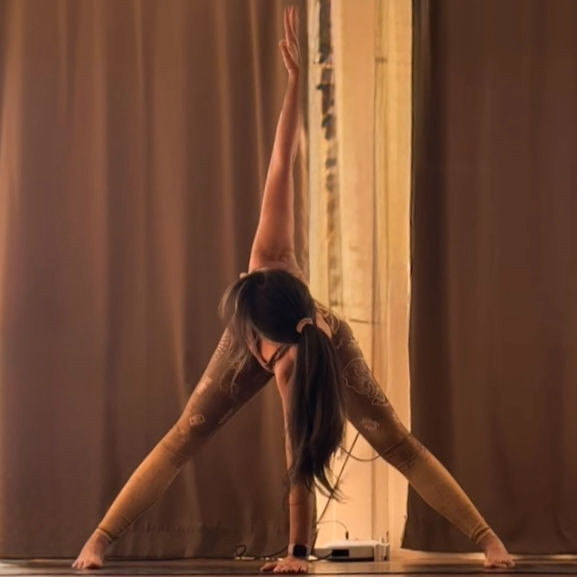As Within, So Without — The Principle of Correspondence and the Yoga of Alignment
- Priscilla Lêite

- Oct 20
- 3 min read
“As above, so below; as below, so above. As within, so without; as without, so within.”— Hermes Trismegistus
Yoga is not merely a physical practice; it is a language — a way the body speaks to the mind and the soul. When we step onto the mat, we enter a living laboratory of consciousness. Here, every movement, every breath, and every subtle alignment mirrors something deeper.
The Principle of Correspondence, articulated in Hermetic philosophy by Hermes Trismegistus, states that what happens on one level of reality reflects what happens on every other. This universal law reminds us that there is a bridge between the visible and the invisible, between body and mind, between personal practice and daily living. Yoga, in its essence, lives in this same truth.
Body Alignment as Inner Alignment
When we practice asanas, alignment is often taught in a physical sense: grounding through the feet, stacking the joints, lengthening the spine, finding balance between stability and ease.
But alignment is far more than just anatomy. When we align the body, we create a blueprint of order that the mind can reflect upon. The body becomes a teacher: a silent, wise mirror that shows us the state of our inner world.
When the body is chaotic or disconnected, the mind tends to mirror that confusion. But when we organize the body with precision and presence, the mind begins to follow — it calms, centers, and finds clarity. This is the living expression of “as within, so without.”
“When the body is steadied, the mind follows.” — Patanjali (Yoga Sutra II.46: “Sthira Sukham Asanam”)

From the Mat to the Mind
Every time we adjust the angle of a foot, lengthen the spine, or soften the jaw, we are not only shaping the physical form — we are training awareness. We are learning to create inner architecture: a structure that supports clarity, intention, and purpose.
This is why body alignment and mental alignment are inseparable.
When the spine is lifted and free, the breath deepens.
When the breath flows, the mind steadies.
When the mind steadies, intention becomes clear.
And when intention is clear, actions align naturally.
The mat becomes a reflection of life. How we meet a pose — with resistance or curiosity, with discipline or distraction — often mirrors how we meet challenges off the mat.
Aligning Thought, Intention, and Action
Hermetic philosophy teaches us that the outer world reflects the inner world. Yoga gives us practical tools to reshape the inner world, so that the outer world also shifts.
When we:
Align the body, we create physical order.
Align the mind, we create mental clarity.
Align the heart, we create coherence between intention and action.
Imagine holding Tadasana (Mountain Pose). At first glance, it seems simple — just standing. But with awareness, the feet root like the earth, the spine rises like a mountain, the heart lifts like the sky. This external alignment naturally brings the mind into alignment: upright, clear, open.
When we step out of the yoga mat, the memory of that alignment doesn’t vanish. It informs the way we stand in difficult conversations, how we face uncertainty, how we make choices. A stable posture on the mat becomes a stable posture in life.
Embodied Philosophy
The principle of correspondence and yogic alignment both remind us that nothing is isolated. Each thought, each breath, each movement sends ripples into the greater whole.
So when we carefully align our bodies in asana, we’re not merely perfecting shapes — we are rehearsing how to live in alignment:
Thoughts aligned with truth.
Words aligned with intention.
Actions aligned with purpose.
“Your outer world is a reflection of your inner state. To change what is around you, return to what is within you.” — Hermetic Teaching
On the mat, we learn the language of alignment. Off the mat, we speak it through the way we live.
Every posture is a prayer in motion. Every line of alignment is a reminder of our capacity to bring harmony between what we think, what we feel, and what we do.

When we stand tall, breathe deeply, and live consciously, the universe responds in kind.


Comments